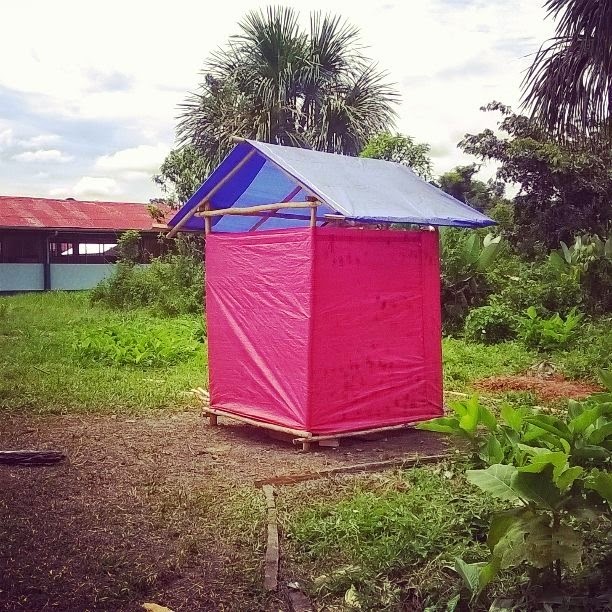Since it's hard to plan for the unknown much of the expedition remained unplanned, giving us the flexibility to stay or go depending on what we could do in different places, and what was most interesting. We stayed in three communities along the river, each of them very different from the others. We were a team of 16 or so, from different backgrounds and countries. There were some very interesting people on the team, some scientists, some artists. We traveled in different ways, by boat on the amazon river, by local bus, by mototaxi (tuc tuc). We camped in the jungle with just hammocs and tarps (didn't sleep at all the first few nights but then loved the hammoc-despite the crazy nightly tropical storms), learned basic spanish, found lots of tarantulas, learned about local plants, played with the kids and had some excellent conversations.
Native communities are small groups of people (say 100-300 people) living together, somewhere between living off the land and being capitalist. Some sell their crafts, some have tourism, others sell their produce (fruit, rice etc). They all had a few things in common: they're extremely friendly and welcoming people (and curious about the gringos in town), they're quite malnourished (they'll eat rice and pasta only, very few greens or fruits, occasional fish or meat), they're Catholic, lots of teenage (13-16 year old) mothers, and they have a general lack of infrastructure (toilets, bathrooms, any kind of medical care, etc). There are a lot of things to help with.
This trip was a first contact with these communities, some of us will likely be back soon to work on next steps with them. It'd be cool to be on that team. It might happen too - I'm heading out to Mexico in the beginning of December to join Jon, the founder of the clipperton project, and help out with some of the work for a while. Interesting times ahead.
I like Peru. I was expecting a culture shock but it never happened. It is a strange place with a lot of contrast. As with many South American countries, there's only one mayor city: Lima is home to a third of the population. It has the biggest slums I have ever seen. The country is almost as geologically diverse (snow capped mountains, sand desert, lakes, tropical forest, surfing beaches,...) as it is corrupt. They really like their beans, rice and chicken. The gap between rich and poor is painfully obvious, and being a gringo means you're rich. It feels quite safe, also in the non tourist areas (though I'm sure there are quite a few places to avoid in Lima).


















No comments:
Post a Comment